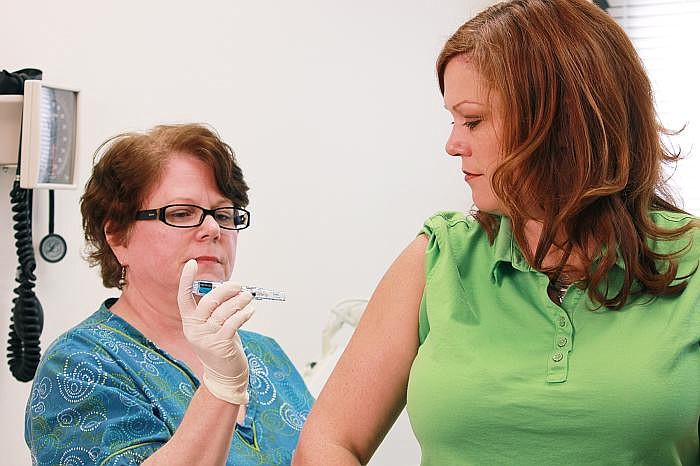- April 18, 2024
-
-
Loading

Loading

Flu cases in Central Florida and across the nation continue to grow as a familiar strain of the flu makes an unexpected return this season.
Research from the Centers for Disease Control and Prevention shows that the H1N1 virus, also known as “swine flu,” makes up the majority of flu cases this year in the U.S., and is starting to show up in symptoms at Centra Care walk-in clinic locations throughout Seminole and Orange County.
“We’re seeing nationwide that the predominant strain is H1N1, so it’s consistent with the spot checking of the patients we’ve seen at Centra Care since the fall,” said Dr. Tim Hendrix, medical director for Centra Care.
“Most of the reports are coming back H1N1.”
One Brevard County woman in her mid-30s has already died of it, and two others at the start of this week were on life support. None of the three are in typical groups of those most affected by the flu — the very young and the elderly.
Centra Care facilities and other clinics across the state have been sending DNA samples from patients to the Florida Department of Health for testing.
Of the 24 swabs sent for the week of Dec. 22, 13 of them tested positive for swine flu, according to the Florida Department of Health’s Florida Flu Review for Week 52.
“The majority of cultures I’ve heard about have come back positive for H1N1 at Centra Care,” Hendrix said.
Centra Care’s 25 facilities in Orlando and Tampa have seen the number of influenza cases rapidly increase over the past month. The week of Dec. 8 saw 133 cases of the flu, followed by 200 cases during the week of Dec. 15.
Last week saw a total of 353 cases.
The exact number of residents in Central Florida with swine flu remains difficult to quantify, but several Centra Care physicians have reported that more and more samples are coming back positive for H1N1, Hendrix said.
People around the world were thrown into a panic back in 2009 when the H1N1 virus first emerged in Mexico as a new flu strain. A global pandemic erupted, leaving doctors scrambling to create a vaccine to fight back.
Records kept by the Centers for Disease Control and Prevention estimate that between 43 million and 89 million people in the U.S. were infected between April of 2009 and April of 2010.
Between 8,870 and 18,300 people in the U.S. died during that time frame from H1N1-relatated complications, according to the Centers for Disease Control and Prevention website.
Orange County saw at least 14 of those deaths, said Public Information Officer Dain Weister of the Florida Department of Health.
The number of swine flu cases dropped between 2009 and the current flu season, but the swine flu never truly went away, said Joseph Bresee, chief of Epidemiology at the Centers for Disease Control and Prevention’s Influenza Division. People who previously faced the H1N1 strain built up an immunity to it, which has now lasted a few years for many people in the U.S.
But the antibodies that help fight that particular strain eventually grow weak and disappear, causing the number of flu cases to dramatically increase, he said.
“It’s been a minority virus in the last few years, but it’s been present,” Bresee said.
“We may be seeing H1 just because we haven’t seen much in the past few years, therefore more of the people are not immune and are susceptible to the virus this year.”
Young children, adults 65 and older, pregnant women and anyone with underlying health problems are the most at risk of complications related to swine flu, he said. But that doesn’t mean the entire population and every demographic doesn’t need a flu shot.
“It’s clear each year that we see people that are hospitalized and die of flu without being in any of these groups,” Bresee said.
“Flu is a very democratic disease in that sense. It can affect anybody and anybody can get sick.”
Bresee urged residents that it’s still not too late to get a flu vaccine, which currently matches up with and protects against the H1N1 strain. The CDC reports that flu season can last until early spring, generally peaking in January and February.